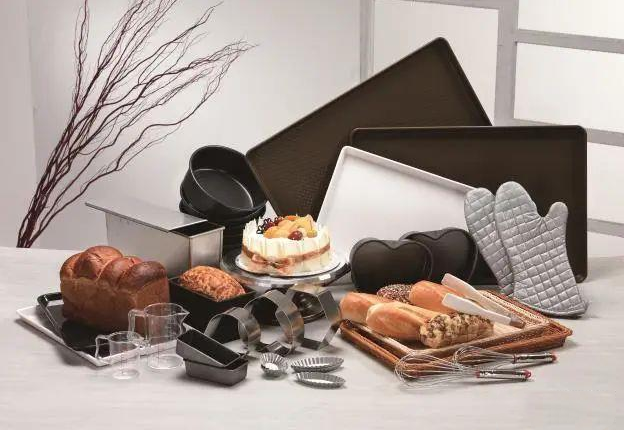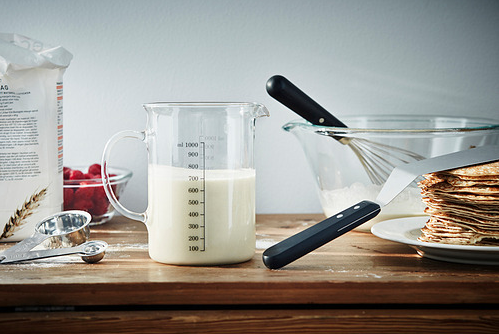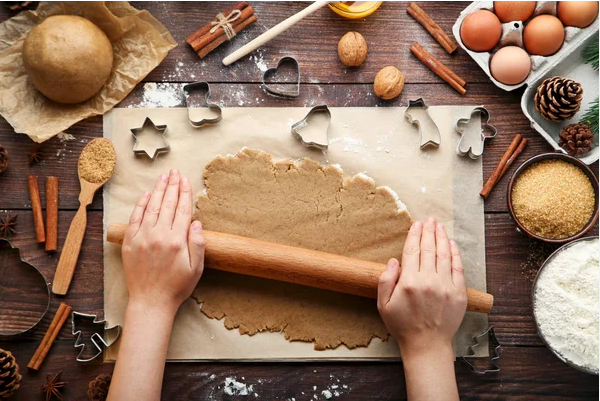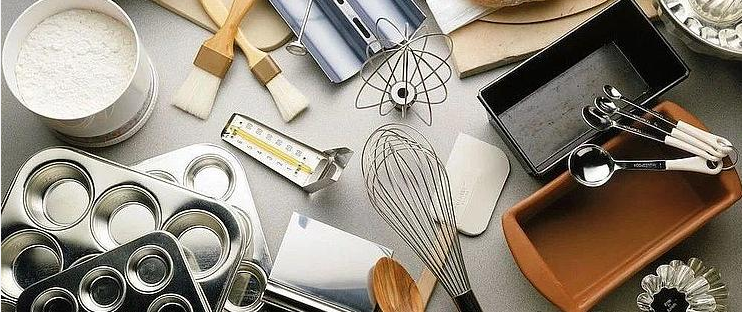Baking is not only an art of turning ingredients into delicious food, but also an activity that can bring many benefits and fun. Whether it’s making bread and cookies by hand in a home kitchen or learning new techniques in a professional baking class, baking has its unique charm and benefits.
Many people have found that baking is an effective way to relieve stress. Focusing on the process of mixing dough, whipping cream, and adjusting oven temperature can help people temporarily forget about the stress and troubles of daily life. The process of baking involves precise steps and meticulous operations, and this focused and repetitive work can relax the brain and provide a psychological calm. Baking not only provides a creative outlet, but also serves as a way to relax and relieve stress. It can also promote interaction and cooperation among family members. Whether making cookies with children or preparing dinner Dim sum with partners, this common activity not only enhances the cohesion of the family, but also provides precious shared time. By participating in baking together, family members can enhance understanding and emotions, while creating beautiful memories.
Let’s explore the secrets of each baking tool below, providing unlimited possibilities for your dessert creation.

1. Why are measuring tools indispensable?
In the process of baking and cooking, precision is the key to success, and measuring tools are the foundation for achieving precision. Whether it’s making a delicate cake or mixing a delicious soup, the use of measuring tools is indispensable. We will explore why measuring tools are so important and introduce some commonly used measuring tools and their roles in the kitchen.
1.1 Ensure the accuracy of the formula
Every recipe or dessert recipe is carefully designed, and its success depends on the precise proportions of each ingredient. Measuring tools can ensure that you accurately add each ingredient according to the requirements of the formula. For example, when making a cake, the ratio of flour, sugar, butter, and eggs directly affects the taste and structure of the cake. If there is no accurate measuring tool, these ingredients may be too much or too little, leading to taste deviation or production failure. Therefore, measuring tools help us strictly operate according to the requirements of the formula, ensuring that every production can achieve the desired effect.
1.2 Improve the efficiency of cooking and baking
The use of measuring tools can significantly improve the efficiency of kitchen work. Accurately measuring ingredients can reduce the process of trial and error, saving time and effort. For example, using a measuring cup and spoon can quickly and accurately measure liquids and dry materials, while using a kitchen scale can be precise to the nearest gram. In this way, not only can the preparation of ingredients be completed quickly, but also the trouble of starting over due to incorrect quantities can be avoided. The efficient use of measuring tools makes cooking and baking smoother and more enjoyable.
1.3 Ensure consistency and repeatability
Consistency is crucial in both commercial and home kitchens. Especially when you need to make a large number of identical desserts or dishes, ensuring that the taste and appearance of each serving are consistent is key. The use of measuring tools can ensure the accuracy of each ingredient, thereby ensuring that every dessert or dish produced has the same quality and flavor. This consistency is essential for both professional chefs and home cooking enthusiasts, as it can boost their confidence and enhance customer or family member satisfaction.
1.4 Avoid wasting food ingredients
Using measuring tools can also help reduce food waste. Accurate ingredients not only ensure the taste and appearance of food during cooking and baking, but also prevent waste caused by excessive use of ingredients. For example, when baking bread, excessive yeast or flour not only affects the quality of the bread, but may also lead to additional food waste. By using measuring tools, you can accurately control the amount of each raw material used, thereby avoiding unnecessary waste and economic losses.
1.5 Simplify the learning process
For novice chefs or baking enthusiasts, measuring tools can simplify the learning process. Many recipes provide detailed ingredient and measurement requirements, and using measuring tools can help beginners understand and follow these requirements more easily. Measuring tools provide visual measurement standards, enabling beginners to quickly master cooking and baking techniques and reduce errors that may occur due to lack of experience.
1.6 Support healthy eating habits
Measuring tools also play an important role in healthy eating. By accurately measuring ingredients, you can better control the calories and nutritional content of each meal. This is especially important for those who need to control their diet, such as dieters or diabetes patients. Accurate measuring tools can help you make nutritious food at home, thereby promoting the development of a healthy lifestyle.


2. Select the best baking tray and mold
Choosing the appropriate baking tray and mold is the key to success in the baking process. The right tools can not only ensure even heating of desserts, but also help you achieve the desired taste and appearance. Whether you are making soft cakes or crispy cookies, understanding the characteristics of different baking pans and molds will help you navigate the kitchen with ease. Here are some factors and suggestions to consider when selecting the best baking tray and mold.
2.1 Material selection
Aluminum baking tray
Aluminum baking trays are known for their excellent thermal conductivity, which ensures even heating of food and reduces the occurrence of hot spots during baking. This material is suitable for baking various types of bread and cookies, but special attention may need to be paid to cleaning as it is prone to leaving scratches.
Non-stick cookware
The non stick pot surface is coated with a special layer to prevent food from sticking and ensure that the dessert is easy to demold. This type of baking tray is very suitable for making cakes, pies, and pancakes. However, it should be noted that non stick coatings may wear out over time, so it is recommended to use silicone tools for operation to extend their service life.
Silicone mold
Silicone molds are widely popular due to their flexibility and non stick properties. They are suitable for making various chocolates, candies, and mousse. Silicone molds can be easily demolded, but it is necessary to ensure that they remain stable in the oven during use to avoid deformation affecting the shape of the dessert.
Glass baking tray
Glass baking trays can provide even heat distribution and are typically suitable for slow baking recipes such as brownies or toasted bread. Glass material is very stable at high temperatures, but care should be taken to avoid sudden temperature changes to prevent cracking.
2.2 Size and shape
Standard size
Choosing standard sized baking trays and molds can ensure the accuracy of the recipe. For example, a standard 9×13 inch baking tray is suitable for most cake recipes, while a standard 12 hole pancake mold is suitable for making a batch of pancakes or cupcakes. Understanding the mold size required for your recipe and choosing the appropriate standard size can avoid unexpected problems during the baking process.
Special shape
If you want to add creativity to desserts, you can choose various special shaped molds, such as heart-shaped, star shaped, or petal shaped. These molds can add unique decorative effects to your desserts, especially suitable for making holiday or birthday cakes. When selecting, ensure that the mold material with special shapes is heat-resistant and meets your baking needs.
3. Durability and easy cleaning
Durability
Choosing durable baking trays and molds can ensure long-term use without deformation or damage. Aluminum and non stick coated molds are usually more durable, while the flexibility of silicone molds also makes them less prone to breakage. Avoid using low-quality molds that are easily deformed or damaged to avoid affecting the baking effect.
Easy to clean
Choosing easy to clean baking trays and molds can reduce the hassle of cleaning. Non stick pans and silicone molds are usually easy to clean, while coated aluminum baking pans may require more meticulous cleaning work. Regular cleaning and proper maintenance will help extend the service life of the mold.
4. Temperature adaptability
High temperature resistance
Ensure that the baking tray and mold you choose can withstand high temperatures and are suitable for the oven you are using. Most molds can withstand common oven temperatures, but special formulas or technical requirements may require molds made of specific materials. Check the product manual to ensure that the temperature range of the mold is suitable for your baking needs.
Uniform heating
Choosing a baking tray and mold that can be uniformly heated is crucial for achieving consistent baking results. Aluminum and glass molds typically provide more uniform heat distribution, while some non stick coated molds may experience hot spots during heating. Understand the heating characteristics of different materials and choose the appropriate tool according to your needs.


3. Selection of electric and manual baking tools
In the process of making desserts, choosing appropriate mixing tools can not only improve efficiency, but also ensure the quality of the final product. Electric and manual tools each have their unique advantages and application scenarios. Understanding their characteristics will help you make the best choice based on actual needs. The following is a comparison and suggestion between electric and manual tools to help you make perfect desserts in the kitchen with ease.
3.1 Advantages of electric tools
3.1.1 Improve efficiency
Electric mixers and food processing machines, due to their powerful power and versatility, can complete heavy mixing work in a short period of time. For example, an electric egg beater can quickly beat egg whites and cream, saving a lot of manual mixing time. Food processing machines can simultaneously complete multiple tasks such as mixing, cutting, and blending, especially suitable for handling large quantities of ingredients or dough that requires long-term mixing.
3.1.2 Consistency
Electric tools provide stable mixing speed and uniform mixing effect, making the results more consistent every time a dessert is made. For example, when using an electric mixer to beat cream, its even stirring can ensure that the texture of the cream is delicate and consistent, which is particularly important for making cakes and desserts.
3.1.3 Suitable for complex tasks
Some complex baking tasks, such as whipping thick batter or making creamy cream, can be more easily accomplished with electric tools. High end electric mixers are usually equipped with multiple speed settings and accessories (such as mixing hooks, mixing bars, and mixing heads) to meet different types of mixing needs.
3.2 Advantages of manual tools
3.2.1 Fine control
Manual mixers and mixing rods provide higher control accuracy, especially when handling small amounts of ingredients or tasks that require fine mixing. A manual mixer allows you to adjust the mixing speed as needed to achieve better mixing results. This is an ideal choice for baking enthusiasts who enjoy controlling the mixing process.
3.2.2 Lightweight and economical
Manual tools are usually lighter than electric tools and do not require a power source to use. This makes them more convenient for handling small batches of ingredients. For example, manual mixers and stirrers are usually more affordable and suitable for households with limited budgets to use in their kitchens.
3.2.3 Suitable for small-scale mixing
For baking tasks that require mixing small amounts of materials or occasional use, manual tools are the ideal choice. For example, when making a small amount of protein foam or quickly mixing batter, hand tools can provide sufficient mixing effect without using high-power electric tools.
3.3 How to choose
3.3.1 Requirement analysis
Choosing the appropriate tool first requires clarifying your needs. If you often make large quantities of desserts or pastries, power tools may be a better choice as they can save time and improve efficiency. If you only bake occasionally, manual tools may be more suitable, lightweight, and economical.
3.3.2 Tool functions
For power tools, check their speed settings, accessories, and additional features (such as mixing hooks, mixers, etc.) to ensure they meet your baking needs. For manual tools, attention should be paid to their comfort and durability, and products with comfortable handles and sturdy structures should be selected.
3.3.3 Maintenance and Cleaning
Electric tools usually require regular maintenance and cleaning, especially their electric components and accessories. Hand tools, on the other hand, are easier to clean and usually only require simple manual cleaning. Choose tools that are suitable for your cleaning and maintenance needs based on your time and energy schedule.


4. How to choose a suitable oven
Choosing a suitable oven is the key to successful baking. Whether you are a home baking enthusiast or a professional chef, choosing an oven that suits you can not only improve baking results, but also make your kitchen work more efficient. This article will provide you with some practical advice on choosing an oven to help you find the best option.
4.1 Determine the type of oven
4.1.1 Convection oven
The convection oven is equipped with a fan and heating element, which can evenly distribute hot air inside the oven. This design helps avoid hot spots and uneven baking, making it particularly suitable for making large quantities of desserts or recipes that require precise temperature control. Convection ovens typically provide faster heating times and more uniform baking results.
4.1.2 Ordinary Oven
Ordinary ovens usually only have upper and lower heating elements and do not have fan function. Although they may not heat evenly like convection ovens, they can still provide good baking results for some simple baking tasks such as making cookies and cakes. Ordinary ovens are usually more affordable and suitable for households with limited budgets.
4.1.3 Embedded Oven
The embedded oven design is modern and usually built into kitchen cabinets, saving space and improving kitchen aesthetics. They typically have multiple baking modes and functions, making them ideal for users who require professional level baking results. When choosing an embedded oven, it is important to ensure that its size is suitable for your kitchen space.
4.1.4 Desktop Oven
Desktop ovens are suitable for users with limited kitchen space or who need to move the oven. They are usually smaller than built-in ovens and suitable for making small batches of food. Although small in size, many desktop ovens still have powerful features and multiple baking modes.
4.2 Pay attention to oven capacity
4.2.1 Capacity Requirements
When choosing an oven, you need to consider your baking needs. If you often make large-sized cakes or bake whole turkeys, choosing a larger capacity oven would be more suitable. Usually, large capacity ovens are suitable for large families or households that frequently hold gatherings, while small capacity ovens are suitable for daily simple baking needs.
4.2.2 Adjustable Rack Position
Some ovens offer multiple adjustable rack positions, allowing you to flexibly adjust the height of the rack according to different baking needs. This design can improve the flexibility of the oven and is suitable for multi-layer baking and the production of large-sized food.
4.3 Consider temperature control accuracy
4.3.1 Temperature accuracy
Ensure that the selected oven has accurate temperature control function. The stability of temperature has a direct impact on the baking effect, especially for recipes that require precise temperature, such as macaron and crispy Dim sum. High quality ovens are typically equipped with precise temperature control systems and constant temperature functions to ensure consistent temperature during the baking process.
4.3.2 Temperature Display and Adjustment
Modern ovens are typically equipped with digital displays, making it easy for you to accurately set and monitor baking temperatures. Some high-end models also offer preset baking programs that can automatically adjust temperature and time, simplifying the operation process.
4.4 Check for additional features
4.4.1 Self cleaning function
Many high-end ovens are equipped with self-cleaning functions, which can burn off food residues inside the oven at high temperatures, reducing the hassle of cleaning. If you want to reduce maintenance work, choosing an oven with self-cleaning function would be more convenient.
4.4.2 Multi functional mode
Some ovens offer multiple baking modes, such as baking, grilling, fermentation, and fan heating. These multifunctional modes allow you to handle various recipe needs, improving the flexibility and effectiveness of baking.
5. Evaluate the brand and after-sales service
5.1 Brand reputation
Choosing a well-known brand of oven usually provides higher quality assurance and performance stability. Understand user reviews and professional evaluations of different brands, and choose brands with good reputations and reliable services.
5.2 After sales service
Good after-sales service can provide longer protection for your oven. Understand the warranty policy and customer service support of the selected brand to ensure timely assistance and repair services in case of any issues.
6. Tips for using icing tools
Frostbite decoration is an important part of enhancing the visual effect of desserts in baking. Whether adding exquisite icing decorations to cakes, cookies, or cupcakes, mastering the right tools and techniques will make your desserts more charming. This article will introduce some common icing tools and their usage techniques to help you become proficient in the decoration process.
6.1 Choose the appropriate icing tool
6.1.1 Squeeze Flower Bag
Squeeze bag is the most basic and important tool in icing decoration. It can be used to create various intricate decorative patterns. Choose a durable and leak proof squeeze bag, and ensure that its material is suitable for the type of frosting you are using.
6.1.2 Flower Mouth
Hua Zui (also known as Hua Zui Tou) is used in conjunction with squeeze flower bags, and their different shapes and sizes can help you create various decorative effects. Common flower mouths include round mouth, star mouth, leaf mouth, etc. Choosing the right flower bud can help you complete from simple edge decoration to complex floral patterns.
6.1.3 Scraper
Scrapers are used to smooth and organize frosting, especially when covering large areas of cake. Choosing a soft silicone scraper can avoid scratching the surface of the cake and help you easily smooth out the frosting.
6.1.4 Rotating cake rack
Rotating the cake rack can make the decoration process smoother, especially when decorating the cake comprehensively. It allows you to easily rotate the cake, ensuring that each side is evenly coated with frosting and reducing unevenness in decoration.
6.2 Preparation of icing sugar
6.2.1 Choose the appropriate icing sugar
Choose the appropriate type of frosting according to your decoration needs. Common icing includes butter cream, cream cream, and royal icing. Butter cream is suitable for making rich decorations and floral patterns, while cream cream is more suitable for spreading and smoothing, while royal icing is suitable for delicate decorations and dried decorative patterns.
6.2.2 Adjust the viscosity of frosting
The consistency of icing directly affects the decorative effect. Thick icing may be difficult to squeeze out, while thin icing may lead to unstable decoration. By adjusting the sugar powder or liquid composition in the frosting, you can achieve the ideal consistency suitable for squeezing and applying. Generally speaking, icing sugar should have a certain degree of fluidity, but should not be too thin.
6.3 Usage skills
6.3.1 Use of Squeezed Flower Bags
When using a squeeze bag, put icing sugar into the bag and tie a knot at the bag opening to avoid icing sugar leakage. Stable pressure should be maintained during use to ensure even flow of frosting. The grip method of squeezing flower bags is also important. Usually, one hand is used to hold the bottom of the bag, while the other hand is used to guide and control the flow of frosting.
6.3.2 Creating Decorative Patterns
Using different flower buds can create various decorative effects. For example, round mouthpieces are suitable for making small or fine threads, star mouthpieces can be used to make stars and lace, and leaf mouthpieces are suitable for making leaves and petals. Practicing different flower mouth techniques and decoration methods will help you master more creative decoration schemes.
6.3.3 Smoothing and Organizing
When using a scraper, first apply the frosting to the surface of the cake using a rough technique, and then gently smooth the frosting with a scraper. Keeping the scraper at a small angle to the surface of the cake can help you achieve a smooth and even surface. If necessary, a warm scraper (dried by heating with warm water) can be used to smooth the frosting more smoothly.
6.4 Cleaning and maintenance
6.4.1 Cleaning Tools
The frosting tool needs to be cleaned immediately after use to prevent the frosting from drying out and becoming difficult to remove. The squeeze bag and spout can be cleaned with warm water and a small amount of detergent to ensure thorough rinsing. Scrapers and rotating cake racks also need to be cleaned in a timely manner to maintain the hygiene and good condition of the tools.
6.4.2 Tool maintenance
Regularly check the condition of the tools, such as the leakage of the squeeze bag or the wear of the flower nozzle. Timely replace damaged tools to ensure smooth decoration every time.


7. Tips for choosing long-lasting kitchenware
Choosing the right kitchen utensils during the baking process can not only improve your baking efficiency, but also make your baking experience more enjoyable. Here are some tips for choosing practical baking utensils to help you create an efficient and durable baking tool.
7.1 Determine requirements
Firstly, clarify your baking needs. Do you occasionally bake some simple cookies, or do you want to make complex cakes and bread? Select suitable tools based on personal baking frequency and style. For example, if you enjoy baking bread, high-quality bread knives and dough scrapers are particularly important.
7.2 Material selection
Choosing durable materials is crucial. Here are several common baking utensil materials and their advantages and disadvantages:
Stainless steel: sturdy and durable, easy to clean, not easy to rust, very suitable for mixing bowls and measuring tools.
Silicone: flexible and non stick, suitable for molds and baking pads, easy to demold.
Cast iron: retains heat and is suitable for making bread and cookies, but it is relatively heavy and requires regular maintenance.
7.3 Basic tools
Here are some basic tools that every baking kitchen should have:
Mixing bowls: Prepare at least two stainless steel or glass mixing bowls of different sizes for easy handling of various ingredients.
Measuring tools: Accurate measuring cups and spoons are crucial for baking, ensuring the use of heat-resistant materials.
Baking tray and mold: Choose the appropriate baking tray and mold according to commonly used recipes, preferably with anti stick and easy to clean styles.
Scraper and rolling pin: These tools are very practical when making dough and decorating cakes.
7.4 Multi functional tools
Choose those multifunctional kitchen utensils that can come in handy in multiple baking projects. For example, a silicone rolling pin with a scale can not only be used for rolling dough, but also as a measuring tool, saving space and cost.
7.5 Brand and Evaluation
Check the brand and user reviews of the product before making a purchase. Famous brands typically offer higher quality assurance and better after-sales service. User feedback can provide you with a clearer understanding of the actual performance of the product.
7.6 Regular maintenance
Even the best kitchenware requires regular maintenance to extend its lifespan. After cleaning, thoroughly dry and do not use metal tools to scratch the surface. Timely inspect and replace damaged components to ensure that kitchen utensils are always in optimal condition.


7. How to maintain your baking tools
Dessert making not only requires skills, but also good tool maintenance to ensure smooth baking every time. Here are some practical maintenance suggestions:
7.1 Cleaning and drying
After each use, clean the tools promptly with warm water and mild detergent to avoid food residue. Thoroughly dry after cleaning to prevent rust or mold.
7.2 Avoid severe collisions
Be careful when using to avoid collisions between tools, especially glass and ceramic products, to prevent damage.
7.3 Regular inspections
Regularly check the wear and tear of tools, especially knives and baking pans. If any damage is found, replace them in a timely manner.
7.4 Proper storage
Place the tools in a dry and well ventilated place to avoid any impact from damp environments. You can use a tool rack or storage box to keep it tidy.
5. Use appropriate tools
Use appropriate utensils for dessert tools made of different materials.
For example, silicone tools are suitable for high temperature resistance, while wooden tools are not suitable for putting in dishwashers.
7.6 Avoid excessively high temperatures
During the baking process, pay attention to the heat-resistant temperature of the tools to avoid deformation or damage caused by excessive temperature.
Through these simple maintenance measures, your dessert tools will be more durable, helping you easily create delicious desserts
Point.
8. The secret to improving the efficiency of dessert production
Improving efficiency in dessert making can make the entire process smoother and more enjoyable. Here are some practical tips:
8.1 Prepare materials in advance
Prepare all the ingredients and tools in advance before starting the production. This includes measuring flour, sugar, butter, etc. to ensure everything is within reach and avoid searching midway.
8.2 Use efficient tools
Investing in efficient baking tools such as electric egg beaters, food processors, etc. can significantly reduce manual operation time.
8.3 Understand the recipe
Before making, carefully read the recipe, understand the requirements and schedule of each step, and avoid confusion during the production process.
8.4 Perform multiple tasks simultaneously
Try to perform multiple tasks at the same time, such as preparing materials for the next step while waiting for the oven to preheat, which can make full use of time.
8.5 Batch production
If possible, consider making desserts in bulk, such as baking multiple cakes or cookies at once, which can save time and energy.
8.6 Clean up the work area
During the production process, keeping the work area clean and constantly cleaning up spilled materials and used tools can reduce the hassle of subsequent cleaning.
Through these simple tips, you can significantly improve the efficiency of dessert making, making every baking experience enjoyable and fulfilling.

